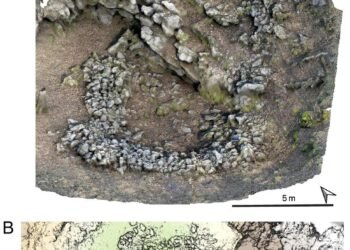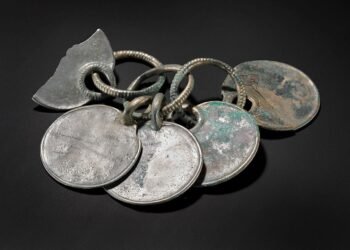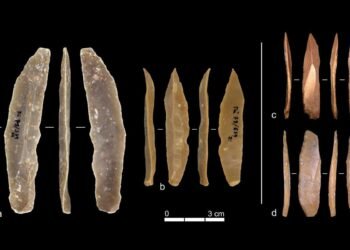A rare and historically significant medieval gold Rhenish guilder has been unearthed near the town of Kamień Pomorski in West Pomerania, Poland. This remarkable find was made by Daniel Kwaśniak, a passionate history enthusiast and member of the Saint Cordula Exploration Association. Kwaśniak discovered the coin during an authorized metal detecting survey, organized under the guidance of the Provincial Conservator of Monuments in Szczecin. The coin, buried about 10 centimeters deep, has been hailed by the Museum of the History of the Kamień Land (MHZK) for its excellent preservation and historical value.
The coin is a gold Rhenish guilder dating back to the early 15th century, specifically between 1429 and 1430, during the rule of Otto von Ziegenhein, the Archbishop and Elector of Trier. Otto was a significant political and religious figure in the Holy Roman Empire, serving as archbishop from 1419 to 1430.
The obverse of the coin features an intricate depiction of Otto dressed in liturgical robes, holding a crozier in one hand and raising the other in a gesture of blessing. Surrounding the image is the Latin inscription “OTTONIS ARCPI’TR,” which translates to “Otto, Archbishop of Trier.” According to the MHZK, religious symbols characteristic of the archbishopric of Trier also appear on either side of the archbishop’s figure.
The reverse of the coin is equally detailed, showcasing a heraldic shield representing the archbishopric of Trier. Encircling the shield is the inscription “MOnETA-nOVA-AVREA-OVEN,” which means “New gold coin of Offenbach.” This inscription points to the coin’s minting location, likely Offenbach. Measuring 28 millimeters in diameter and 0.7 millimeters thick, the coin is both delicate and richly symbolic of the era’s political and economic landscape.
Museum officials quickly emphasized the rarity and significance of finding such a coin in Poland. The Rhenish guilder was a central currency in the German monetary system during the 14th and 15th centuries, frequently used in long-distance trade. These coins facilitated commerce between regions such as Bohemia, Hungary, Switzerland, Moravia, the Netherlands, Spain, and France.
“This discovery is evidence of intensive trade and political contacts between Pomerania and Central Europe during the 15th century,” stated representatives of the MHZK. “The coin could have entered Pomerania through trade, but it’s also possible that it was part of a larger treasure hidden during armed conflicts.”
The Rhenish guilder now joins the Kamień Land History Museum’s collection of gold coins. It is the third gold coin found in the region, following the discovery of a gold coin of Frederick William II from 1794 in 2014 and a gold ducat from 1777, discovered earlier this year.
The museum hopes that the coin’s discovery will encourage further research into the region’s past.
Source: PAP























